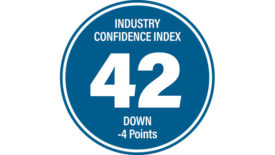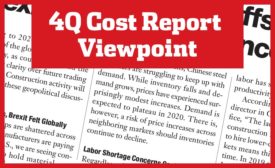Home » Keywords: » labor shortages
Items Tagged with 'labor shortages'
ARTICLES
4Q Cost Report: Cost Escalation, Labor Shortages Among Global Challenges in 2024
Contractors must navigate persisting difficulties
Read More
4Q Cost Report: Pessimism Lingers for Construction Executives
Firms report access to project financing, labor shortages among their top concerns
Read More
ENR Contractor Business Strategy
Specialty Contractors in High Demand Amid Supply Constraints
Read MoreCommentary on Labor Shortages
How A Contractor Saved The Day On A Troubled Florida Condo Project
Read MoreThe latest news and information
#1 Source for Construction News, Data, Rankings, Analysis, and Commentary
JOIN ENR UNLIMITEDCopyright ©2024. All Rights Reserved BNP Media.
Design, CMS, Hosting & Web Development :: ePublishing

.jpg?height=168&t=1707143343&width=275)
.jpg?height=168&t=1640194228&width=275)








